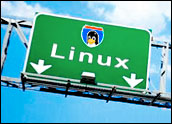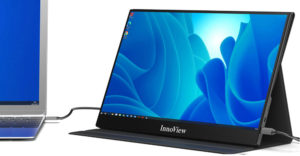
Discuss the merits of the many competing desktop Linux distributions out there, and you could fill several hours with heated debate. Turn the conversation to enterprise server distros, however, and the room can become quiet very quickly.
The fact is, those on the hunt for the best or easiest or cheapest enterprise Linux distro have far fewer choices. You might think that a smaller hit list would make the job of choosing the ideal Linux server distro easier, but that’s often not the case.
Which is the best distro for your enterprise servers? To some extent, the answer is in the eye of the beholder. For that reason, LinuxInsider sought the advice of a team of, well, Linux insiders.
No one server distro fits everyone’s enterprise situation, of course. Still, there are some key factors to keep in mind as you assess the options. Remember why you use Linux instead of those other guys — it all comes down to choices and the freedom to choose what works best for you.
Know the Options
No two Linux server distros are exactly the same. They do, however, share very similar components and functionality, noted Marty Wesley, senior principal product marketing manager for Red Hat.
“The reason for this is that they all pull from the same upstream sources,” Wesley explained. “When you consider that Linux is actually a collection of many packages (as many as several thousand, depending on the distribution), you begin to notice that a particular Linux distribution, and the version of that distribution, is truly a huge packaging exercise,” Wesley told LinuxInsider.
For example, all Linux distributions start with a kernel from the upstream Linux kernel project led by Linux creator Linus Torvalds. They differ in that each pulls from the upstream project at a different point in time and each has different engineering, testing and QA processes. That creates a fluid design that navigates the Linux stream in two directions.
The first leads to temporary differences in the distributions that are rectified with each new pull from the upstream sources. The second situation leads to more permanent differences in the various Linux distributions, Wesley noted.
Decide on a Framework
The differences in Linux server distros come down to Linux is Linux. There are advantages and disadvantages for each Linux server choice. For instance, scaling capabilities that you get with the Power architecture Linux server distro are not available with the x86 Linux server distros, according to Jim Wasko, director of IBM’s Linux Technology Center.
The same is true for the mainframe Linux distro. Differences among distros for the same platform or architecture often come down to the differences in the versions. They tend to leapfrog one another, Wasko noted.
“On the surface, if you are trying to run a database on top of any Linux distro, the core performance is the same,” Wasko told LinuxInsider.
Some companies develop what Wasko calls “roll your own” where they build their own internal distribution. Such companies get the same benefit as they would from any Linux distro regarding the Linux kernel, he said.
Get Community-Cozy
Among Linux server distros, the particular developer community forms a big piece of the distinguishing differences. In this realm, distros are decidedly different, but not as wide-ranging as Linux desktop distros are, noted Kerry Kim, director of Linux markets for Suse.
“Much more evident with Linux server distros is how they target overall business goals and objectives,” Kim told LinuxInsider. “Also a factor is how they are designed for specific user markets.”
All core server functionality is developed in the open source community just as it is for the desktop distros. Live DVD versions are available. The real difference is in ecosystems, support and functionality, he said.
Make Family Connections
“Probably fewer practical server OS distros exist,” Kim said. “Most of the companies have specific needs and want the full paid support targeted to what they want to accomplish. They also want to pay for guarantees that the hardware and software certifications for that server product are maintained for the hardware and software they use.”
Users can choose between the free community-support server versions and the for-subscription support in the enterprise version. All of the server distros are distributed under similar open source licenses. Free versions have their fee-based versions, he said.
Regardless of hardware and distro differences, an essential consideration in picking a Linux server distro is the life expectancy of mission-critical software you may have developed in-house.
“What is its expected life cycle? You do not want to deploy an application that will be around for five years on a distribution that changes every six months,” Wesley advised. “You’ll spend all your time rebuilding and testing the application with each new Linux server distribution change.”
Make a Plan
Perhaps the best starting point is to check the requirements of the distros you consider. Hardware and software configurations you want to use may not be compatible. Different server distros may cater to certain architectures.
For example, the IBM server line for Linux supports x86 and Power architectures for mainframes. These contain the same kernel and same packages within the distributions. IBM supports two commercial enterprise editions from Red Hat and Suse, noted Wasko. [*Correction – Jan. 16, 2014]
Companies tend to select a Linux server distro based on the developer’s reputation and support quality, Kim noted. Essential to this is the server distro’s certifications to run on specific hardware and software combinations.
“It is a lot of work for any server developer,” he explained. “Any changes in the coding require new testing to maintain certifications are valid.”
Be Prepared
Look at the organizations that are behind each Linux server distribution that you consider, Wesley suggested. Assess their track record in regards to the computing environment and workload you are running.
Overall, potential users should consider the environment and workload in which the server they select will run, suggested Wesley. The first decision should be: Is this running in an environment where it requires support, maintenance, security patches, updates, etc.?
Also important is to make sure the expertise is available to help you with whatever problems you might have. This last point is important because it highlights that it’s not just about the bits that are delivered. It’s also about the companies that stand behind those bits, said Wesley.
Count Your Costs
Factor in the cost and success of in-house IT care versus outside server services. Free Linux server distros are not much of a bargain if your operation requires high maintenance because the in-house staff is inadequate.
This is a common situation. If it’s the case for you, then you really need to look for a Linux server distribution that is supported by a commercial vendor, according to Wesley.
“Free Linux server distributions might be fine for use in less important environments,” he explained. “But if the system must be maintained and supported, then you need to have someone to turn to for help with support and maintenance. You do not want to spend your time searching for answers or building fixes yourself.”
Weigh Design Factors
Engineering differences show up in the packages and technologies that are chosen by default. These differences include how the various technologies are assembled and how they are maintained. Examples of this include the choice of using the Red Hat installer (Anaconda) versus the Suse Linux installer (Yast), noted Wesley.
“The meaningful differences really come down to the engineering, testing and QA processes,” he said.
It is also important when selecting a Linux server distro to consider the top-level applications like the LAMP stack. Figure out what you are going to run at the top level and what your overall goals are for the server. Then see which distro lines up better with your enterprise strategy, added Wasko.
Modular or Integrated
Oracle began its enterprise server entry with a copycat version of Red Hat. Now Oracle has its own version tweaked to work with its other Linux database and business products, Kim pointed out.
Suse’s primary emphasis is on building out its ecosystem and hardening it packages, Kim added. One key difference between it and Red Hat is how integration works all in one package. This attracts customers who prefer to have an integrated product line. To that end, Suse partners with other developers for add-on components.
This modular approach can help control resources and save money by not having to replace the entire Linux stack. This also helps performance and mediate vendor lock-in.
Avoid Vendor Lock-in
If an enterprise server OS is developed to support mostly the community’s own products, a form of vendor lock-in can occur even though the supplier is an open source dealer, noted Kim.
“Even with open source servers, choices you make can be limiting,” he cautioned.
The big difference is in approach. Potential users of one server distro over another should know if the server OS design favors integration or best of breed, according to Wasko.
The modular approach has the advantage of letting users build in their own level of customization. The integrated-stack approach builds in a dedicated software line that takes advantage of vendor specialty software.
Wasko finds that user companies tend to standardize on one server distribution or another. Often they base the decision on what is offered from that vendor. For example, does the distro have its own server stream and update mechanism?
Don’t Assume Bigger Is Better
The mainstream Linux server OSes are Red Hat (60 percent market share), Suse (30 percent market share), Oracle (5 to 8 percent market share) and Ubuntu (less than 4 percent), according to Kim. Other Linux server distros include Mandriva, Xandros, Slackware, Debian and CentOS — but this is far from an exhaustive list.
The question of bigger or smaller being better is no longer valid when it comes to Linux enterprise-grade servers, Wasko believes. Over time, the answer to “bigger or smaller” has merged into whether you should consider a pure server distro or a server service company.
That is because many Linux distro developers have grown up since the early 1990s, when they started. Today they align well with the larger server hardware manufacturers. They understand the need for life cycles and extended support, and they provide this in a global market rather than a regional setting.
Be Goal-Oriented
What is more significant than the bigger-or-smaller question is the “mainstream Linux server versus lesser-known Linux community distro” question, Wasko noted. The answer to that question depends on what you are trying to accomplish.
For example, server systems in an environment that requires support and maintenance or runs commercial applications on common hardware probably are best suited to a mainstream Linux company, he explained.
Niche systems or those using custom development on unique hardware or specific application development for a narrow target audience might get better support in a smaller Linux community, he added.
“The challenge,” Wasko concluded, “is that often those smaller Linux server communities might limit your ability to address a wider market or utilize industry-standard hardware and software.”
*ECT News Network editor’s note – Jan. 16, 2014: Our original published version of this story mistakenly named Cisco as one of two commercial enterprise editions supported by IBM, according to Jim Wasko, director of the company’s Linux Technology Center. Wasko actually named Red Hat and Suse — not Red Hat and Cisco. We regret the error.





















































